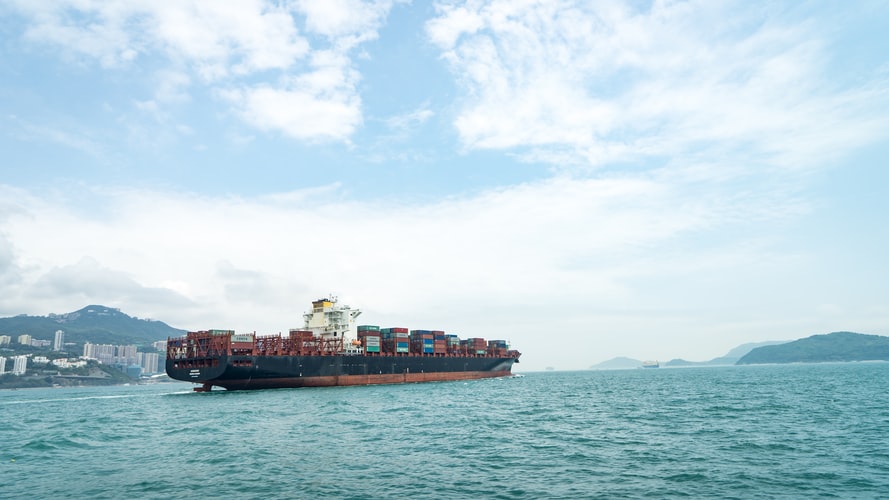Shipping Trends NEWS|Aquasky

The outbreak of the new type of coronary pneumonia (COVID-19) that began in 2020 has had the biggest impact on the world in decades, and the international shipping industry, which carries nearly 90% of the world's trade, has also been unprecedentedly affected.
The shipping industry was originally had impacted by the Sino-US trade war that began in 2018. In addition, the global trade volume caused by the new crown pneumonia epidemic has shrunk significantly. Therefore, the shipping industry has adopted the "autonomous reduction of cabins" in the first half of2020 in order to maintain the balance of freight rates. Unexpectedly, the epidemic has not been controlled for a long time and tends to become more and more serious. Many countries have adopted policies such as lockdowns to control the epidemic. Ports in various places even refused to specific countries' dock at the p, resulting in crew changes, ship suspension, and other issues that forced shipping. The company began to reduce the shipping schedule or to stop shipping as a corresponding plan.
During the lockdown period, the demand for household products such as home appliances, furniture, home maintenance products, and online shopping products had surged sharply. Under the lockdown policy, the novel coronavirus epidemic had gradually decrease in various regions. European and American importers, because of concerns about the recurrence of the epidemic and the Sino-US trade war, began to stock up in advance. Starting in July 2020, the recovery of the shipping industry had been driven by the stimulus policies promoted by various countries. Among them, the United States, Germany, and Japan all released stimulus policies of more than US$1 trillion. According to "Bloomberg", the stimulus policies of various countries mainly belong to three aspects: stimulus policies for disease and medical treatment, subsidies to consumers, and loan concessions for enterprises, tax relief, and labor cost subsidies. Jeremy Nixon, CEO of Japan Ocean Network Shipping (ONE), said that the shipping market is recovering in a V shape, and the freight volume in September 2020 has returned to the level before the outbreak. However, since the current global container manufacturing plants are concentrated in China, and there is no container building due to the impact of the epidemic in the first half of 2020, even if the volume of transportation increased, it would not be able to increase rapidly.
As the season transformed into winter, the epidemic in Europe and the United States had increased again, leading to the resumption of the lockdown ban. Due to the shortage of unloading work caused by the closure of the city, the port had been congesting and ship tailback. Many United States companies were rushing to rebuild their inventory before the holiday season at the end of the year. However, due to the prolonged time of port shortage of containers, the increase in container turnover days, and the adjustment of shipping industry flights in the first half of 2020, there had been a shortage of containers in Asia. And even shipping costs have risen with the tide.
According to Bloomberg Information, the problem of soaring freight rates caused by the lack of containers had influenced the supply chain level of the operations. For example, Volkswagen AG was forced to suspend the production plan of its world’s largest car factory in Germany; Honda Motor Co. also had to reduce the output by five North American factories, all because automotive chips could not be used. Shipment on schedule. The goods could not be exported as scheduled, and the manufacturer had to bear the inventory pressure on its own. Chris Rogers, the chief analyst at Panjiva of a global trade data company, believed that the cost of rising freight rates may also be passed on to consumers in the future.
Fortunately, the phenomenon of lack of cabinets had begun to slow down in early 2021. The area, where the lack of cabinets was particularly serious last year, was especially the Shanghai area in mainland China. After the epidemic slowed down, the mainland regions restarted production and shipments, and the demand in North America had been surging, but no containers could be used. sea freight forwarders had begun to transfer empty containers from Europe and the United States to Asian routes and Chinese container manufacturers have also begun to produce containers to alleviate the shortage of containers. Although the problem of lack of cabinets had indeed been alleviated during the Lunar New Year, experts had estimated that the volume of goods would rise again at the end of Marchand may return to the original situation in April.
The research report of the Danish shipping consulting agency, Sea Intelligence, pointed out that the inventory of the US retail industry was currently at a historical low point. This phenomenon was obviously good news for shipping companies. However, the problem of port congestion and ship tailback had not yet been resolved. Even if the cargo arrived at the destination port, it might take a month for the cargo owner to pick up the goods. This had also caused a significant drop in the turnover rate of ships and a sharp increase in ship rents. Hapag-Lloyd AG which is from Germany, had announced that it will charge a port congestion fee.

This article is just for share. Please advise removing immediately if any infringement is caused.